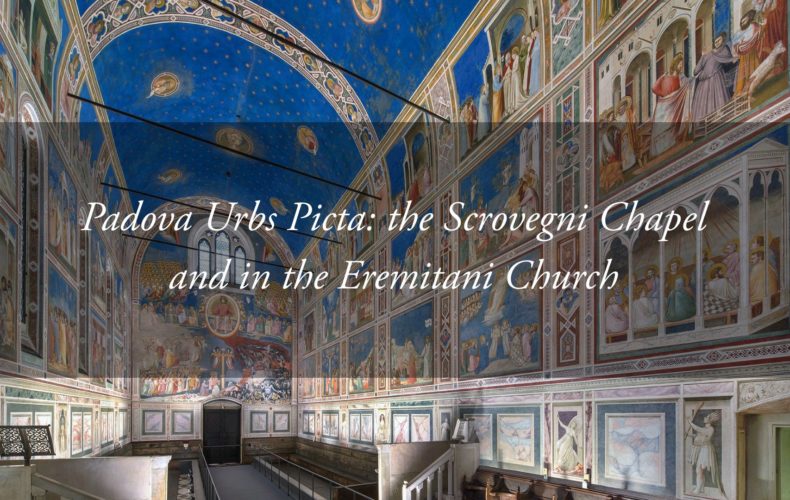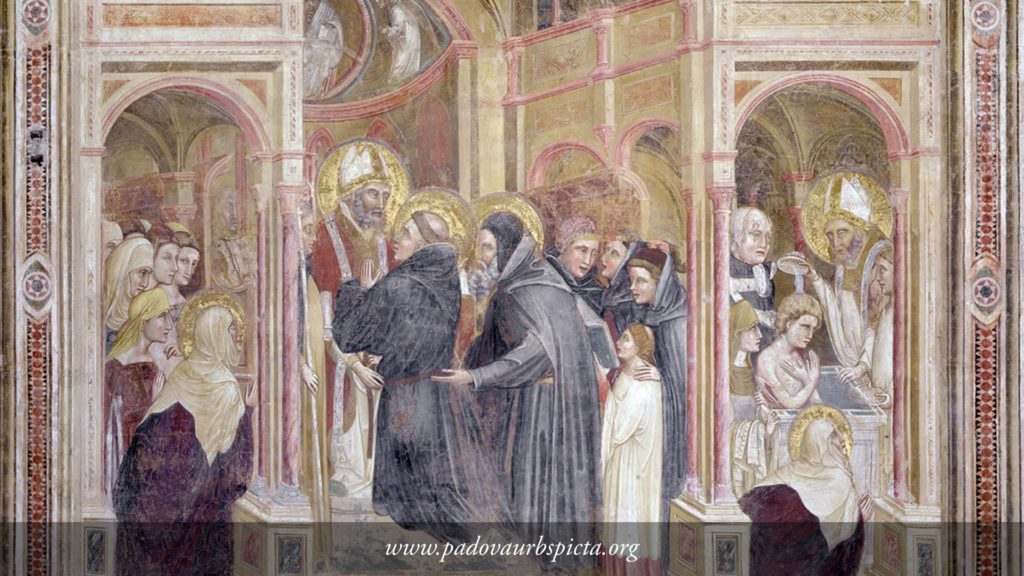
Padua Urbs Picta: the masterpiece of frescoes in the Scrovegni Chapel and in the Eremitani Church
Having reached the final, extraordinary stage of our itinerary amid the beauty of Padua Urbs Picta, we treasure what we learned at the previous sites as we can better understand the importance of the frescoes at the Scrovegni Chapel and the Eremitani Church.
In previous articles we discussed the innovations of Jacopo da Verona in the Oratorio di San Michele, the stories told by the frescoes in the Palazzo della Ragione and in the Baptistery of the Cathedral, and the importance of the prospective study in the Cittadella Antoniana and in the Oratory of San Giorgio.
Our journey through time ends with looking upwards in the Chapel that made Padua a world-famous city, and which contributed to the inclusion of the Paduan pictorial cycle among the Unesco World Heritage sites.
The Scrovegni Chapel: colours and details that are never forgotten
The cycle of frescoes in the Scrovegni Chapel was created between 1303 and 1305 by Giotto. Not only is this cycle the best preserved in the world, it is also the highest expression of the artist’s creative genius; such expression is not found in any of his other works.
The visitor will be surpised by Giotto’s research on spatiality, which precedes Leon Battista Alberti’s theorization of perspective by over a hundred years. In addition, there is in-depth research on the rendering of human emotions with the aim of making them palpable. The same study is carried out by the artist in the representation of plants and animals, architecture, objects and fabrics. Making this a special work are also the bourgeois commissioning clients, and the actualization and “secularization” of sacred history within artistic representations.

Modernity and unique details in the Church of the Eremitani
The frescoes in the church of Santi Filippo e Giacomo degli Eremitani are placed in a chronological span that extends from the 1530s to the 1570s. Here you can see the development of Giotto’s work by Guariento di Arpo and Giusto de ‘Menabuoi.
The artists study the rendering of the architecture, making it more complex and articulated than that present in Giotto’s cycle. They also pay attention to detail to give the cycle a new scenographic effect. Moreover, colour also becomes a determining element in creating the spatiality of the rooms and the volume of the figures.

Finally, the modernity of this cycle is represented by the female presence among the commissioning clients, aristocratic Paduan families linked to the Lordship of the Carraresi. The noblewoman Traversina Cortellieri entrusted Giusto de ‘Menabuoi with the frescoes for the chapel dedicated to her son Tebaldo. A few years later, as has already been said, Fina Buzzaccarini would entrust the decoration of the Baptistery of the Cathedral to the same artist.
This concludes our journey among the frescoes of the city of Padua: all that remains is to visit these extraordinary works in person and perhaps also dedicate time to the well-being of the body at the Hotel Tritone.
You can book your next trip to Padua and your stay at the Hotel Tritone by writing here or by calling (+39) 049 8668099.
